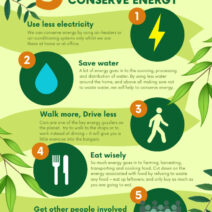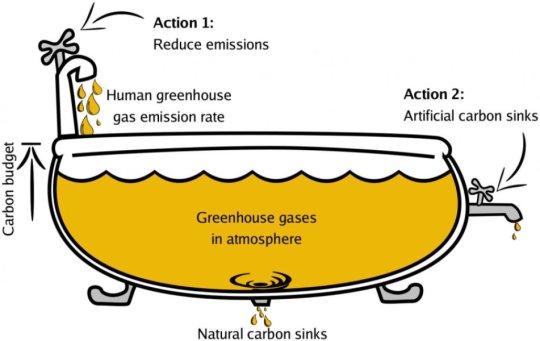The rapid escalation of climate change has cataclysmic implications for our planet. As the human-induced greenhouse gas emissions surge, the discourse surrounding sustainable solutions has taken center stage. But amidst this disquieting atmosphere, an intriguing innovation emerges—artificial photosynthesis. Can this technology genuinely contribute to averting the ominous threat of global warming? Let us delve into the potential of this captivating solution, exploring its mechanisms, capabilities, and challenges.
Artificial photosynthesis is a biomimetic process that aims to replicate the natural photosynthetic efficiencies of plants. In simple terms, nature’s alchemy transforms sunlight, carbon dioxide, and water into glucose and oxygen, providing sustenance for plant life while sequestering carbon in the process. The version devised by scientists is designed to exploit sunlight to split water molecules, producing hydrogen and oxygen, while also capturing carbon dioxide to generate carbon-based fuels outright. The essence is to harness and amplify the solar energy that sustains life on Earth.
At the heart of this process lies a fundamental question—can artificial photosynthesis transition from theoretical potential to practical application? The technology’s proponents tout it as a revolutionary solution capable of addressing the twin crises of energy production and climate change. By harnessing renewable energy directly from the sun, it presents a tantalizing way to produce clean fuels while simultaneously mitigating carbon emissions. And therein lies the thrilling prospect: could we manufacture energy in a way that is entirely symbiotic with Earth’s ecological equilibrium?
To grasp the potential impact of artificial photosynthesis, one must evaluate its role in carbon sequestration. The global carbon cycle is heavily disrupted by anthropogenic activities, primarily the combustion of fossil fuels, which floods the atmosphere with carbon dioxide—an insidious greenhouse gas. The pivotal role of artificial photosynthesis is its ability to serve as a carbon sink by facilitating the direct capture of CO2. This innovative approach could lead to a reduction in atmospheric greenhouse gas levels, a necessary endeavor for curbing global warming.
Moreover, the advantages of artificial photosynthesis extend beyond mere reduction in carbon dioxide; it also heralds a new era of fuel production. Traditional renewable energy sources, such as solar and wind, require extensive infrastructure for distribution. Artificial photosynthesis holds the promise of decentralization by allowing fuel to be produced on-site, in a clean and efficient manner. This could significantly diminish the need for extensive transportation networks, lessening our carbon footprint further while ensuring energy security.
Moreover, innovations in materials science hold the key to optimizing this technology. Researchers have been experimenting with various catalysts and materials, such as titanium dioxide and copper nanoparticles, to enhance the efficiency of the photosynthetic process. By improving the overall reaction rates, the utilization of sunlight can become more efficient, leading to an improved yield of hydrogen and other energy-dense fuels.
However, this prospective salvation is not without its hurdles. The transition from laboratory-scale experiments to widespread industrial applications poses a formidable challenge. Firstly, scaling up the technology efficiently while maintaining affordability and mitigating ecological impact remains a significant obstacle. Currently, the costs associated with catalyst production and overall process efficiency render artificial photosynthesis less competitive compared to conventional fossil fuels or even other renewable sources.
Secondly, there are technical limitations concerning system stability and the longevity of reaction mediums. Many catalysts tend to degrade over time, leading to a decrease in the overall efficiency of the system. Achieving a balance between performance and longevity will be crucial for the practical implementation of artificial photosynthesis.
Additionally, public awareness and acceptance play an essential role in the adoption of any new technology. While scientists and environmentalists are enthusiastic about these developments, the general populace must understand the potential benefits—and the urgency of taking climate action. Bridging this knowledge gap is paramount for the political and financial backing required to propel artificial photosynthesis from concept to reality.
In summary, artificial photosynthesis indeed harbors the potential to revolutionize energy production while arresting the relentless march of climate change. By addressing fundamental issues linked to carbon emissions, energy production, and resource sustainability, it might very well pave the way toward a greener future. The challenge lies in overcoming the existing barriers to its scalability and affordability while ensuring comprehensive public understanding to foster collaborative action.
So, can artificial photosynthesis save the planet? The answer is intricate, as technology often throws up roadblocks in its implementation. Yet, as we continually strive to reduce our carbon footprint and transition to more sustainable energy solutions, artificial photosynthesis should undoubtedly occupy a vital place in our collective fight against global warming. Its efficacy in mitigating climate change, accompanied by an innovative approach, challenges our notions of energy production and ecological responsibility. The potential is substantial; the commitment to overcoming hurdles must follow closely behind with equal fervor.








